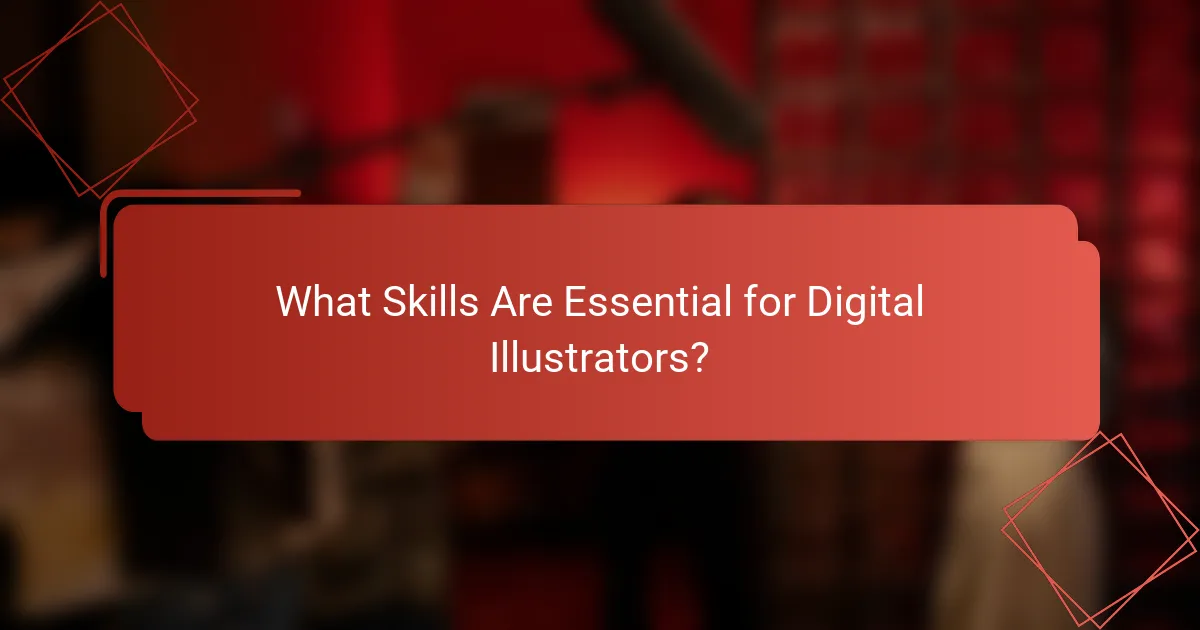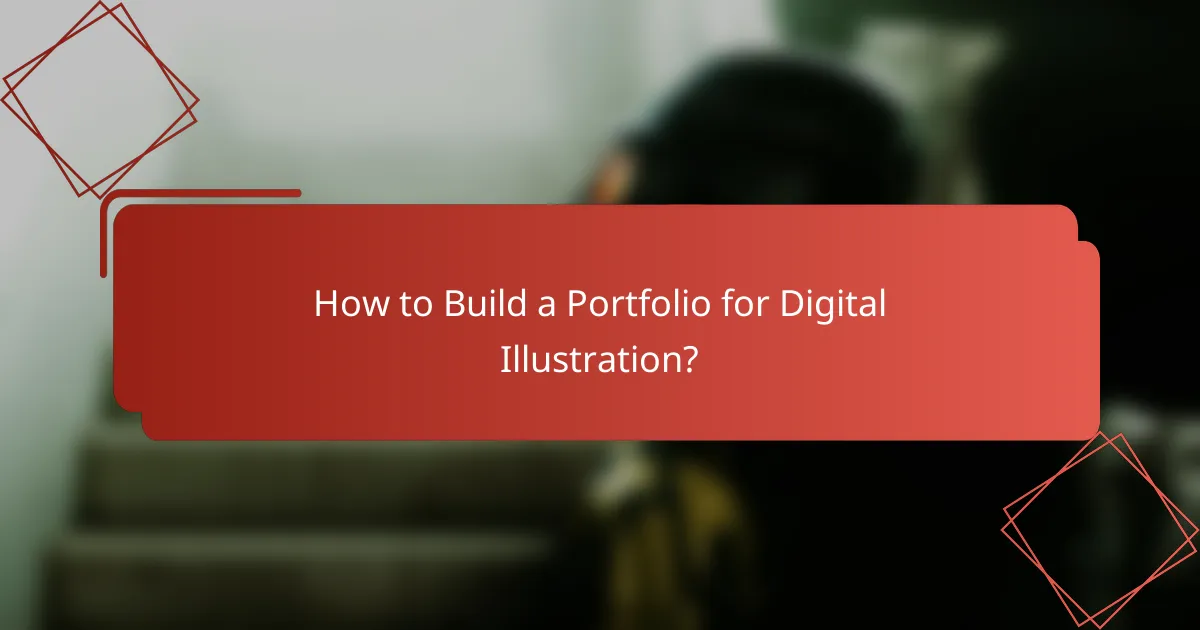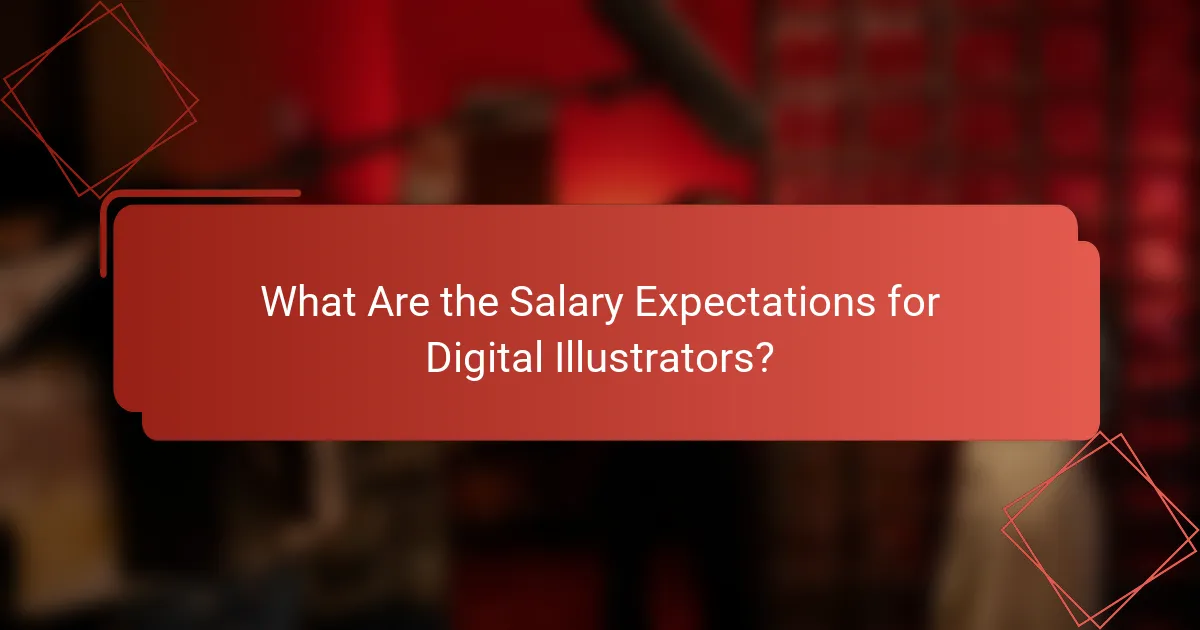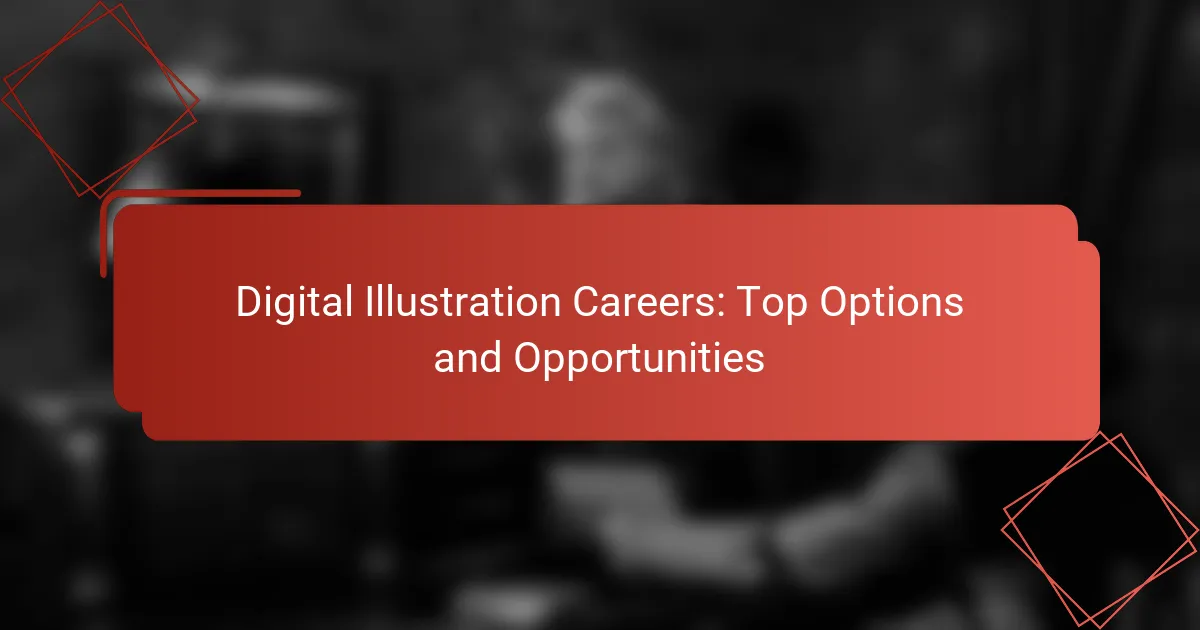Digital illustration careers offer a diverse range of opportunities for artists to apply their creativity across various industries. These roles demand a combination of artistic talent and technical skills, including proficiency in design software and a solid grasp of visual storytelling. A well-curated portfolio showcasing unique styles and high-quality work is essential for attracting clients and advancing in this competitive field.

What Are the Top Digital Illustration Careers?
The top digital illustration careers encompass a variety of roles that leverage artistic skills in different industries. These positions often require a blend of creativity, technical proficiency, and an understanding of visual storytelling.
Concept Artist
A concept artist creates visual representations of ideas for films, video games, and other media. They develop characters, environments, and props to help visualize the project before production begins.
To succeed as a concept artist, one should focus on mastering digital painting techniques and understanding design principles. Building a strong portfolio showcasing diverse styles and concepts is crucial for attracting potential employers.
Graphic Designer
Graphic designers use digital illustration to create visual content for branding, advertising, and marketing materials. They combine typography, imagery, and layout to communicate messages effectively.
Familiarity with design software like Adobe Illustrator and Photoshop is essential. Designers should also stay updated on design trends and client preferences to create relevant and appealing work.
Storyboard Artist
Storyboard artists illustrate scenes for films, animations, and commercials, providing a visual guide for directors and producers. They break down scripts into sequential images, detailing key actions and camera angles.
Strong storytelling skills and an understanding of pacing are important for this role. Storyboard artists often collaborate closely with directors, so effective communication is key to ensuring the vision is accurately captured.
Character Designer
Character designers focus on creating unique and engaging characters for various media, including video games, animations, and comics. They develop the visual style, personality traits, and backstory of each character.
To excel in this field, artists should have a solid grasp of anatomy, color theory, and character development. A diverse portfolio that showcases different character styles can help in securing job opportunities.
Illustration for Children’s Books
Illustrators for children’s books create vibrant and imaginative images that complement the text and engage young readers. Their work is critical in bringing stories to life and enhancing the overall reading experience.
Understanding the target age group and the themes of the story is vital for creating appropriate illustrations. Building a portfolio that highlights a playful and colorful style can attract publishers looking for children’s book illustrators.

What Skills Are Essential for Digital Illustrators?
Digital illustrators need a blend of technical and artistic skills to create compelling visuals. Key abilities include proficiency in software, a solid understanding of color theory, and strong drawing skills, all of which contribute to effective digital artwork.
Proficiency in Software
Digital illustrators must be adept at using various software tools to bring their ideas to life. Popular programs include Adobe Illustrator, Photoshop, and Procreate, each offering unique features for illustration. Familiarity with these tools allows artists to efficiently create, edit, and finalize their work.
Staying updated with the latest software versions and features is crucial, as technology evolves rapidly. Consider participating in online courses or tutorials to enhance your skills and learn new techniques that can improve your workflow.
Understanding of Color Theory
A strong grasp of color theory is vital for digital illustrators, as it influences the mood and impact of their artwork. Understanding how colors interact, the emotional responses they evoke, and the principles of harmony and contrast can significantly enhance visual storytelling.
Practicing color mixing and experimenting with palettes can help illustrators develop their eye for color. Tools like Adobe Color can assist in creating cohesive color schemes that resonate with the intended audience.
Strong Drawing Skills
Strong drawing skills form the foundation of effective digital illustration. Whether working traditionally or digitally, the ability to sketch and conceptualize ideas is essential. This includes understanding anatomy, perspective, and composition, which are crucial for creating believable and engaging illustrations.
Regular practice and studying various styles can help illustrators refine their drawing abilities. Joining online communities or taking part in critique sessions can provide valuable feedback and encourage growth in this area.

How to Build a Portfolio for Digital Illustration?
Building a strong portfolio for digital illustration involves showcasing your best work and demonstrating your unique style. Focus on variety, quality, and relevance to attract potential clients or employers.
Showcase Diverse Styles
To appeal to a broader audience, include illustrations that reflect different styles and techniques. This can range from realistic portrayals to abstract designs, ensuring that your versatility is evident.
Consider creating themed sections in your portfolio that highlight specific styles, such as character design, landscapes, or editorial illustrations. This helps viewers quickly find examples that resonate with their needs.
Include Personal Projects
Personal projects are a great way to express creativity and passion. They often showcase your artistic voice and can be more innovative than client work, which may have specific constraints.
Incorporate projects that excite you, even if they are not commissioned. These pieces can demonstrate your skills and interests, making your portfolio more engaging and authentic.
Highlight Client Work
Including client work is essential as it shows your ability to meet professional standards and collaborate effectively. Select pieces that received positive feedback or resulted in successful outcomes.
When showcasing client projects, provide context by briefly explaining the project goals and your contributions. This adds depth and helps potential clients understand your role and impact.

What Are the Best Platforms for Finding Digital Illustration Jobs?
The best platforms for finding digital illustration jobs include specialized sites that cater to creative professionals. These platforms connect illustrators with clients looking for unique artwork, offering a range of opportunities from freelance gigs to full-time positions.
Behance
Behance is a leading platform for showcasing and discovering creative work, including digital illustrations. Users can create portfolios to display their projects, making it easier for potential clients to find and hire them based on their style and expertise.
To maximize visibility on Behance, ensure your portfolio is well-organized and highlights your best work. Engage with the community by following other artists and providing feedback on their projects, which can lead to networking opportunities.
ArtStation
ArtStation is another popular platform specifically designed for artists, including illustrators, to showcase their portfolios. It features a user-friendly interface and allows for high-quality image uploads, making it ideal for displaying detailed artwork.
Consider using ArtStation’s job board, which lists various opportunities in the gaming, film, and animation industries. Regularly updating your portfolio and participating in community challenges can help you gain visibility and attract potential clients.
Upwork
Upwork is a freelance marketplace where digital illustrators can find a wide range of job opportunities. Clients post projects, and freelancers can submit proposals to bid on them, allowing for flexible work arrangements.
When using Upwork, create a compelling profile that showcases your skills and previous work. Be mindful of setting competitive rates, as they can vary widely based on experience and project complexity. Regularly check for new listings and respond promptly to potential clients to increase your chances of securing jobs.

What Are the Salary Expectations for Digital Illustrators?
Digital illustrators can expect varying salary ranges depending on their experience, location, and the specific industry they work in. On average, entry-level positions may start around $30,000 to $50,000 annually, while experienced professionals can earn upwards of $70,000 to $100,000 or more.
Entry-Level Salaries
Entry-level digital illustrators typically earn between $30,000 and $50,000 per year. Factors influencing this range include the illustrator’s portfolio, the demand for their style, and the region they are working in. Many beginners start in freelance roles or internships, which may offer lower pay but valuable experience.
Mid-Level Salaries
Mid-level digital illustrators, with several years of experience, usually see salaries ranging from $50,000 to $70,000 annually. At this stage, illustrators often have a solid portfolio and may work for established companies or agencies. Networking and building a personal brand can significantly impact earning potential.
Senior-Level Salaries
Senior digital illustrators can command salaries from $70,000 to over $100,000, depending on their expertise and the complexity of their projects. These professionals often take on leadership roles, manage teams, or work on high-profile projects. Specializing in niche markets, such as video game design or animation, can further enhance earning potential.
Freelance vs. Full-Time Employment
Freelance digital illustrators may have variable incomes, often earning between $25 and $150 per hour based on their experience and client base. While freelancing offers flexibility, it also comes with income instability. Full-time positions typically provide a steady salary but may come with less creative freedom.
